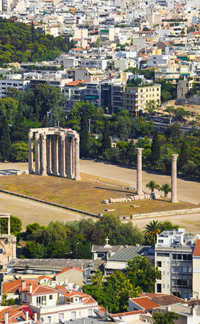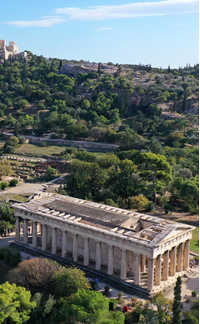Tucked away on the eastern slope of the Acropolis, the Cave of Aglauros (also spelled Aglauros or Aglaurus) is one of Athens’ lesser-known yet deeply symbolic ancient sanctuaries. Often overlooked by casual visitors, this mysterious cave holds powerful connections to mythology, religious rituals, and even patriotic sacrifice.
A Myth Rooted in Sacrifice
According to ancient legend, Aglauros was one of the daughters of Cecrops, the mythical first king of Athens. Her story is intertwined with themes of duty, secrecy, and selflessness. In one version, Aglauros disobeyed Athena and opened a box containing the infant Erichthonius, triggering a tragic fate. In another, more solemn version honored by Athenians, she willingly threw herself from the Acropolis to save the city during a time of war, becoming a symbol of ultimate civic devotion.
The cave became a sacred site associated with this act of sacrifice, representing the values Athenians held dear—bravery, loyalty, and the greater good.
The Sanctuary and Its Use
The Cave of Aglauros served as a religious site where young Athenian men (ephebes) would make vows of allegiance to the city before joining the military. This rite of passage was part of their coming-of-age ceremony and was infused with patriotic symbolism, as they swore to uphold and defend Athens with the same selflessness that Aglauros had demonstrated.
The sanctuary itself was carved into the natural rock of the Acropolis slope and likely featured a simple altar or niche for offerings. Though little remains today beyond its rocky facade, its legacy lives on through literary references and archaeological significance.
A Quiet Moment in a Busy City
Visiting the Cave of Aglauros today offers a tranquil escape from the more crowded Acropolis landmarks. Nestled among olive trees and uneven paths, the site invites quiet reflection on the ancient values that helped shape Athenian identity.
While it might not boast towering columns or elaborate decoration, the cave’s historical and mythological significance makes it a must-see for those looking to dig deeper into Athens’ cultural roots.
Visitor Tips:
- Location: East slope of the Acropolis, accessible via the Peripatos trail.
- Best Time to Visit: Early morning or late afternoon for cooler weather and a peaceful atmosphere.
- Nearby Landmarks: Parthenon, Theater of Dionysus, and the Cave of Pan.


















